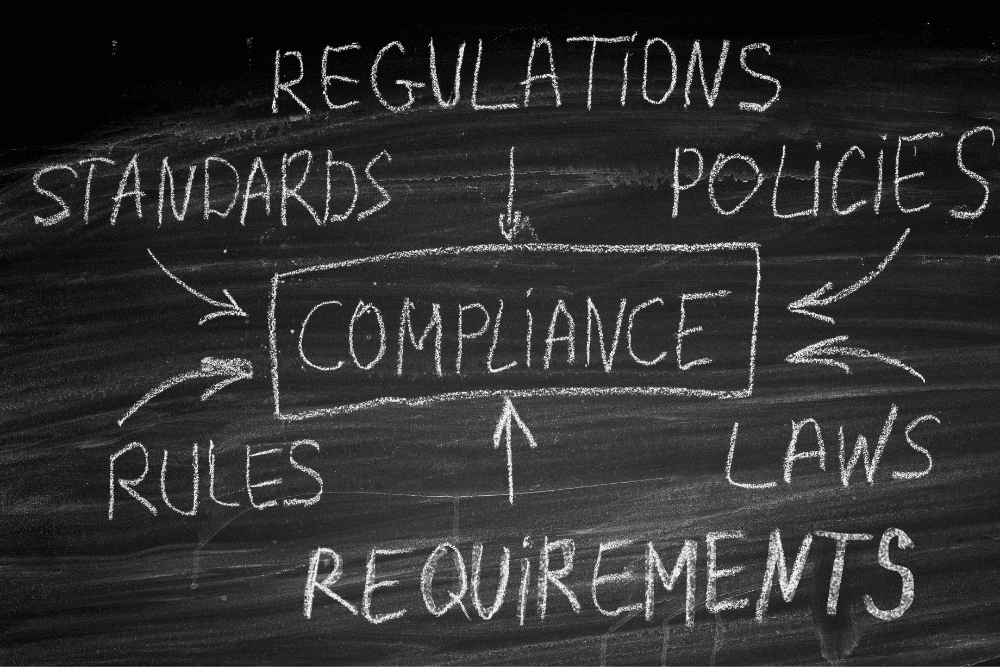
Being out of compliance with your group health program can be a big deal. If your business is not in compliance with ERISA regulations, you may accrue penalties daily until you become compliant.
In 2020, the penalties were pretty steep. If a business had not properly submitted Form 5500, it could be fined up to $2,233 per day. If it failed to provide the mandatory Summary of Benefits Coverage, the business could have penalties up to $1,176 for each failure.
Group health insurance is costly enough for businesses. You don’t want to pay even more because they were not in compliance!
Do you know if your business’s group health program is in compliance?
Because government regulations can be confusing, it is often challenging for employers to ensure they are in compliance. Most of the employers I work with can not confidently say their business is in compliance. They just don’t know.
That’s why it is essential to have an Employee Benefits Advisor walking with your company to help you stay in compliance. It’s your advisor’s job to know the law, explain it to you, and help you acquire the information you need to be in compliance.
To start you on the road to understanding what you need to do to stay in compliance, I have written this article about ERISA, one of three government regulations that pertain to group health programs. In this article, we cover:
- What is ERISA
- ERISA Exemptions
- How ERISA pertains to fully-insured and self-insured programs
- ERISA exemptions
- Four key areas of ERISA compliance
What is ERISA?
ERISA stands for the Employee Retirement Income Security Act of 1974. You may be wondering how an act regarding employee retirement has anything to do with group health insurance regulations.
Great question!
While it is true that ERISA applies to retirement plans, it also applies to a host of other employee benefits including:
- Medical plans
- Dental plans
- Vision plans
- Life insurance
- Long-term disability
- Flexible spending accounts
ERISA Exemptions
A few employers are exempt from ERISA regulations. Plans that are exempt must be established or maintained by:
- Government entities
- Churches
- Plans maintained outside of the United States
To summarize, ERISA applies to any group benefit arrangement that the employer contributes to or helps to administer unless the employer is a government entity, church, or is maintained outside of the U.S.
Fully-insured and Self-insured Group Health Programs and ERISA
If your group health plan is fully-funded or self-funded, you are under ERISA regulations. You are subject to:
- Reporting regulations
- Disclosure regulations
- Fiduciary obligations
- Distribution requirements
Four Key Areas of Compliance
As listed above, there are four key areas of compliance that fully-funded and self-funded group health programs must address in regards to ERISA.
1. Reporting Regulations
Form 5500 is a reporting form that provides information regarding your business’s group health plan, your finances, and your operation.
If you have a business with over 100 employees, according to ERISA, you must file a Form 5500 to both the IRS and the Department of Labor.
If you have a business with less than 100 employees, you generally are not required to file Form 5500.
2. Disclosure Regulations
ERISA plans must have two important documents: a Health Plan Document and a Summary Plan Document.
Health Plan Document
Your Health Plan Document thoroughly details your group health plan. This will include information like your plan’s limits, the benefits offered in your plan, and all of the financial information regarding your plan.
This plan must be made available to your group health participants if they would like to view it.
This document is extensive! All of the terms and conditions of your plan have to be set out in full detail.
Without outside expertise, most businesses can not create this plan on their own.
Summary Plan Description
In addition to a Plan Document, employers must also provide a Summary Plan Description. The document must in plain language:
- Enable participants to know their rights
- Inform participants of how to assert their rights
It’s very important to note that the Summary Plan Description must be in plain language. It must be readable and understandable so that the average layperson can understand their rights.
And it must be distributed to plan members EVERY YEAR.
Benefits booklets and a Summary of Benefits and Coverage DO NOT satisfy this regulation. While a Summary of Benefits and Coverage is required for the Affordable Care Act, it does not satisfy ERISA regulations.
Also, if at any time an employer makes a change to their group health plan, they must give notice to their employees. This is called a Summary of Material Modification. Your SMM must follow all of the same guidelines as your SPD.
Using a “Wrap Document”
To simplify your documentation, you can prepare a “wrap document.” This document compiles all of your health and welfare benefits into one big plan.
For large companies with 100+ employees, you will need to include your Form 5500, Health Plan Document, and SPD in your “wrap document.”
If you are a smaller company with less than 100 employees, your “wrap document” will be a combination of your Health Plan Document and your SPD.
Another important note here, your “wrap document” is for your group health benefits, not your retirement plan. Your retirement plan must be treated separately. Most often your retirement plan will be provided by the financial institution you are working with.
3. Distribution of the Summary Plan Description
Remember your SPD must be distributed to every group health participant every year. You can opt to send out the plan through a paper copy or an electronic copy. This is the same when you make any modifications to your plan and have to send an SMM.
Paper Copy
If you elect to send out your plan using a paper copy, you must be able to show that the method you used ensured your participants would receive a copy – generally by using first class mail.
It is not recommended to use certified mail for sending this document.
Another acceptable option is to insert the SPD or SMM into union or company publications. The publication must, however, indicate that the plan was included in the publication.
Electronic Copy
If you choose to send your SPD or SMM electronically, you must guarantee that your employees have access to a computer at work as an integral part of their job.
If your employees do not have regular computer access at work, they must affirm their consent to receive these documents electronically.
4. Fiduciary Obligations
Under ERISA regulations, each group health plan must have a fiduciary or fiduciaries to oversee the plan. According to ERISA section 3(21), “the fiduciary:
- Has or exercises any discretionary (decision-making) authority or control over the management or administration of the plan.
- Has any discretionary authority over the management or disposition of the plan’s assets, or.
- Gives investment advice regarding plan assets for direct or indirect compensation or has the authority to do so.”
To maintain compliance, the fiduciary of your plan must receive training regarding their responsibilities. Your Employee Benefits Advisor if qualified, an ERISA attorney, or a risk management firm can provide this training.
Your plan’s fiduciary is responsible for the plan’s assets and operation. They make sure that the money set aside for the plan is not mishandled but is used on behalf of your group health members.
Seems complicated? Need help managing compliance issues?
Government regulations are one of the most complicated issues for group health programs. And often employers are out of compliance without even knowing it!
If you are caught out of compliance, your business could receive heavy fines.
So how can you prevent being out of compliance?
The best way to manage government regulations is through the help of an outside advisor. Having an expert who works with these regulations is the only way to lessen the likelihood of compliance issues. You can hire:
- A benefits consultant
- An ERISA attorney
- A payroll company
As an Employee Benefits Advisor, I understand how complicated government regulations can be. I have been working in this field for the past 25 years and have seen many government regulations come and go.
With frequently changing requirements, you want the peace of mind that comes with having an expert on your team. At Baily Insurance Agency, we can bring you that expertise.
Our team focuses on creating a group health plan that is just right for your business. With more than 140 years in the insurance market, Baily Insurance has worked with businesses of all shapes and sizes.
We’ve helped clients self-fund their group health, utilize HRAs and HSAs, and employ a myriad of other solutions to drive down their insurance costs.
And for new clients, one of our biggest priorities is helping you get into compliance – a problem we encounter with many companies that begin working with us.
We also bring our clients additional resources and tools through our partnership with Keystone Insurance Group. We have resources available to our clients that typically only national insurance agencies can provide for their clients.
If you are ready to create a long-term group health plan for your business, give us a call.
Let us help your business today!

